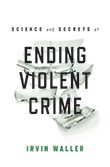Demonstrators from coast to coast in Canada are calling for Black and Indigenous lives to “matter” and to defund the police. We have the solid evidence that identifies what would save those lives. So lets follow the science and invest wisely to make those lives matter.
Canada has the highest rates of lives lost to homicide of G7 countries except for the US. These rates proportionate to population are double those of Germany. The lives of Indigenous males are lost to homicide at seven times that for non-Indigenous males. In Toronto, the loss of lives of young Black men monopolise the headlines. Police action leading to loss of life is dominated by the victimization of Black and Indigenous men.
For more than 20 years, our response to these tragic losses has been more of the same. This allowed the escalating expenditures from municipal budgets on policing to crowd out the early intervention and prevention that we needed to save lives More of the same does not work and much more of the same, as in the US, works even less. Massive expenditures on policing and incarceration have left the US with a homicide rate close to three times that of Canada. Chicago with the same population as Toronto has 7 times the number of homicides despite more than twice the police officers and seven times the number of persons in prisons.
But this is only half the story. The US has ignored its own science on what saves Black lives. The US Department of Justice makes this science available on its website aptly named ¨crimesolutions¨. The World Health Organization, the British College of Policing and several more add to this science to identify what is more effective and cost effective than the flawed criminal justice systems of policing, lawyers and jails.
Based on that science, here are six proven ways to save Black and Indigenous lives in Canada. Most of these are being used more and more in England, the US and elsewhere but all of them are needed in Canada and not just as pilot projects.
- Offices for Violence Prevention in major cities, provinces and federally will save lives from homicide by making loss of life a public health issue that has solutions. The Office must have the skills and permanent budget to diagnose the problems, mobilize the sectors able to tackle the problems, adapt proven solutions to local problems, and evaluate outcomes. The Glasgow model for this achieved a 50% reduction in violent crime within 3 years in the 2000s and is doing even better today and is spreading across the United Kingdom. Cardiff used epidemiological analysis of victims in emergency to achieve a 40% reduction within a year.
- Street Outreach Workers interrupt gang affiliation and mediate violent conflict while guiding the young men most involved in violence to more positive lives. They build trust with the group of young men and so help them complete school and get training and jobs. This must include hospital-based violence intervention when an injured and traumatized young man has to go to emergency. The Cure Violence model has achieved a 50% reduction in violent crime within 2 to 3 years. Hospital interventions are getting even more significant results.
- School curricula in high violence neighborhoods must help young men develop self-management skills and reduce impulsive responses causing violence. The curricula must focus on regulation of their emotions and problem-solving in order to stop the violence. Programs like Life Skills Training, Becoming a Man, and, invented in Toronto, Stop Now and Plan have achieved up to 50% reductions in offending.
- Family services help children grow up without the adverse childhood experiences that contributes to later violence. Enriched child care and positive parenting programming are among the family services that are best established by the science. Multi-systemic Therapy tackles family problems closer to when the difficulties show later. Enriched child care gets reductions in violence of 50% as the children grow up.
- Partnership Policing saves lives by pushing young violent men towards services such as those above. The most effective version has police leadership inviting those involved with violence to a community centre. They also invite key community members such as the mothers and outreach workers. These meetings use the threat of arrest and the presence of community members, such as mothers and faith leaders, to interest the men in proven alternatives. Boston (USA) used it to save more than 50% of lives in less than 3 years in the 1990´s but allowed the problem to return because it did not sustain the funding. This was one of the components of the Glasgow model that maintained their success because they sustained the preventive partnership.
- Mental health experts are needed to reduce the crises and be available 24/7 to respond. Canada has not yet provided the level of community mental health services after it emptied so many patients from mental hospitals several decades ago. The ideal model is likely making mental health services the prevent and first responder service. Another model used by many cities is to establish hubs to bring different sectors together and divert problems to where specialists can help but the funds do not always follow. The original hub model in Prince Albert achieved a 37% reduction in police workload.
Canada is at a cross roads. It can continue with intuition and flawed systems of criminal justice or use science to save lives and reduce the system racism inherent in criminal justice. A sustained investment in these six actions equivalent to ten percent of what is being spent on city police budgets will halve lives lost to, or ruined by, violent crime, unnecessary use of force against racial and disadvantaged groups, and reduce lives lost in mental health crises.
These reductions will not only avoid tragedies but save billions in the costs of violence. Over the next three years, it will reduce the workload on police, courts and jails and so save billions in taxes. Two out of three Canadians want to control crime by investments in education and prevention rather than more police, lawyers, and jails. So, why not?


